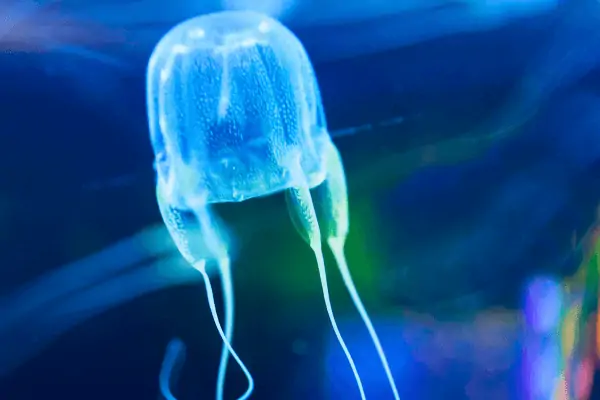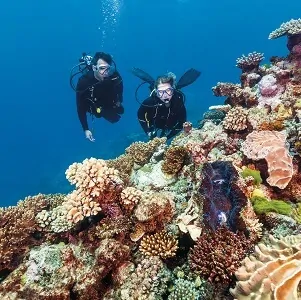There are lots of great swimming spots in Australia, but be sure to know when to look for stingers.
- There are lots of great swimming spots in Australia, but be sure to know when to look for stingers.
- What exactly is a stinger?
- When to keep an eye out for stingers
- Where are stingers most often found?
- Different types of stingers
- How to prevent being a victim of a stinger
- How to treat a stinger wound
- Explore the Great Barrier Reef Tours from Cairns
Australia is known for its unique wildlife. Although there are many cute Aussie creatures, be sure to keep an eye out for some of the more dangerous ones… jellyfish included.
What exactly is a stinger?
A stinger is a species of jellyfish that is found along many of the tropical coastlines of Australia. Stingers are quite dangerous and can even be lethal. Like most things in Australia, the word stinger is a nickname/abbreviation for the infamous jellyfish. Living up to its name, the jellyfish in Australia can pack quite a punch. Without proper precautions, they can leave many oblivious swimmers in a lot of pain.
When to keep an eye out for stingers
It is possible to encounter stingers in the oceans of tropical Australia all year round. However, the months of October to May are when they are at their highest numbers. Stingers do not discriminate, although there are some specifics that they prefer.
They are known to wreak havoc in calm water and sandy beaches with low waves. That means they are difficult to avoid when getting into the water during stinger season. With warmer temperatures, the summertime attracts stingers in their thousands, so be aware!
Where are stingers most often found?
Stingers tend to like warm, tropical waters. This means they hang out more around northern Australia. Swimming in places such as the Northern Territory, Queensland, and Cairns can pose risks during stinger season. That being said, there are no specific stinger areas, as the ocean is their home.
Different types of stingers
- Irukandji Jellyfish
There are two main species of stingers – the Irukandji Jellyfish and the Box Jellyfish. The Irukandji jellyfish are small, but they can be life-threatening to those who have been stung. They are generally tiny, and can often be less than 1cm wide, making them difficult to see in the water. The sting you receive from the Irukandji jellyfish can be described as mild. The pain is often compared to a mosquito bite, but do not let that deceive you, as these stingers can be deadly. - Box Jellyfish
Box jellyfish are the less common species of stingers. They are also quite the opposite of the Irukandji. Box jellyfish can be up to 30cm and have many tentacles. They are also transparent and often blend into the water. The sting of a box jellyfish is similar to that of an iron or an oil burn. They are very painful and can be life-threatening if not treated correctly.
How to prevent being a victim of a stinger
The ocean is the stinger’s home, so it is impossible to avoid them all together. However, there are several ways to minimise your chances of being stung by one.

If you have plans to swim in the ocean during stinger season, your best bet is to hire a stinger suit. The stinger suits look similar to diving suits, but they are much lighter and help prevent stingers from making contact with your skin. They cover your entire body and are a necessity for swimming in the ocean during the stinger season. If you are planning to visit the Great Barrier Reef between October to May be sure to hire your stinger suit!
How to treat a stinger wound
Ideally, you’ll never have to worry about this but it’s better to be safe than sorry, right? If you get stung by a stinger there are a few crucial steps to take.
Since the stingers in the tropical waters can be deadly, you should seek help immediately. Be sure to stay calm and, whatever you do, don’t touch the wound. Next, douse the wound with vinegar. If you don’t have access to vinegar, wash the wound with seawater. If you can, apply an ice pack to the injury to help manage the pain.
Now that you have a better understanding of Australia’s stinger season, be sure to stay safe and aware – and of course, have fun!
Related article: Best Places to see the Great Barrier Reef









